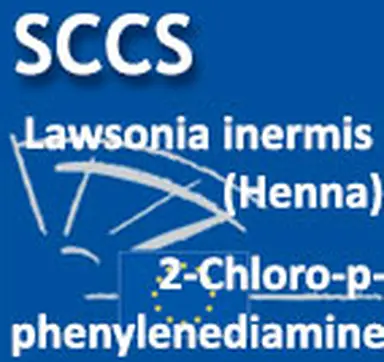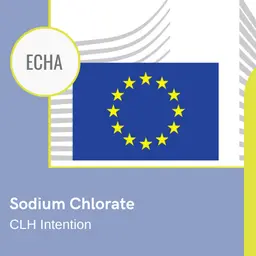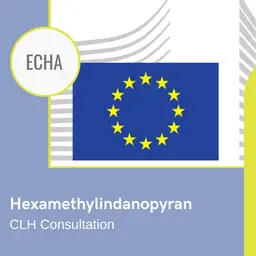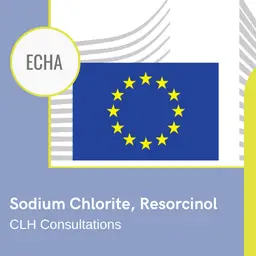
The European Committee of experts, the SCCS, has just released two new Opinions about cosmetic hair dyes. It considers Henna as safe for use (and that there is no need for animal-testing, in spite of the request by France), but the safety margin of the 2-Chloro-p-phenylenediamine as insufficient to validate it. These Opinions have been adopted during the plenary meeting of the Committee, on 19 September, and are open for consultation until 15 November 2013.
Lawsonia inermis (Henna)
Background
The Cosmetics Directive foresees a phasing-out of animal testing for cosmetic products. A ban of animal testing of finished cosmetic products has been in force since September 2004 and a testing ban on ingredients or combinations of ingredients since March 2009. As from March 2009, it is also prohibited in the EU to market cosmetic products and their ingredients which have been tested on animal in order to meet the requirements of the Directive, irrespective of the origin of these products. This marketing ban applies to all but the most complex human health effects to be tested to demonstrate the safety of cosmetic products (repeated-dose toxicity including skin sensitization and carcinogenicity, reproductive toxicity and toxicokinetics), for which the legislator extended the deadline to March 2013.
Article 4a (2.4) of the Cosmetics Directive provides that Member States can request the Commission to grant a derogation from these provisions. Derogation shall only be granted if (a) the ingredient is in wide use and cannot be replaced by another ingredient able to perform a similar function and if (b) the specific human health problem is substantiated and the need to conduct animal tests is justified and supported by a detailed research protocol proposed as the basis for the evaluation. It is foreseen that the SCCS must be consulted prior to such derogation being granted by the Commission.
The Commission has received the first request for such derogation from the French authorities. The derogation request relates to Henna (Lawsonia inermis) (CAS: 84988-66-9). Lawsonia inermis is a natural material derived from powdered dried leaves of the Lawsonia inermis plant. Lawsone is the main active ingredient in henna (Lawsonia inermis). Based on the staining properties of lawsone, it is mainly used as a hair dye, but also applied to the body. Lawsone corresponds to 2-hydroxy-1,4-naphthoquinone (CAS: 83-72-7) and is present at 1 to 2% in the dried leaves of the plant. A hair dye formulation contains a maximum of 20% Henna powder suspended in 80% water.
The SCCS has evaluated the safety of henna and lawsone several times. However doubts remained in relation to the genotoxicity.
In addition to the data that was relied on by the SCCS in its opinions, additional data has become available since then.
The French authorities have carried out an in vitro mammalian cell gene mutation test in L5178Y TK mouse lymphoma cells and have obtained positive in vitro results with and without metabolic activation. They consider that these positive results require confirmatory in vivo testing. The French authorities therefore request a derogation from the animal testing ban in order to perform an in vivo test following the protocol OECD 474 Mammalian Erythrocyte Micronucleus Test, a test method that is included in the Test Methods Regulation as 'B.12. Mutagenicity – in vivo Mammalian Erythrocyte Micronucleus Test' (the test is proposed to be carried out on batch 1271).
The company Logocos has initiated two in vitro tests, one micronucleus test with Chinese hamster V79 cells (OECD 487) that was positive and one micronucleus test with human lymphocytes (OECD 487) that was positive in the presence of metabolic activation and negative without it.
The SCCS had to answer the following questions:
1. Does the SCCS consider that the safe use of henna (Lawsonia inermis) in cosmetics, especially as a hair dye, can be established based on the available scientific data? Would the SCCS suggest concentration limits for the use of henna (Lawsonia inermis) in cosmetic products?
2. In case the safe use of henna (Lawsonia inermis) cannot be established based on the available scientific data, does the SCCS consider that the proposed in vivo testing following test guideline OECD 474 on batch 1271 is necessary and appropriate to obtain the data that will allow a conclusive safety assessment?
3. In addressing the necessity and appropriateness of the proposed in vivo test, could the SCCS in particular address the following questions:
• is there a need for confirmatory animal testing given that there is already animal data available from two earlier in vivo tests?
• could the additional required data be obtained based on non-animal approaches?
• will the proposed testing of batch 1271 provide the necessary data to allow a subsequent safety assessment of henna (Lawsonia inermis)?
Opinion
The SCCS is of the opinion that the information provided is sufficient to assess the safe use of Henna as a hair dye. The assessment is based on the Henna batches 1271 and 830.72 and relates to a Lawsone content of max. 1.4%. When formulated and applied as indicated under functions and uses, e.g. 100 g Henna powder mixed with 300 mL boiling water Henna is considered safe for the consumer.
Other kinds of extracts of Henna that may have different compositions are not covered by this assessment.
The traditional and current expanding use of Henna Rot (Lawsonia inermis) as a body-paint has not been assessed.
Additionally, a reassessment of the genotoxicity of Lawsone by the SCCS is desirable.
• See the full text of the SCCS Opinion
2-Chloro-p-phenylenediamine
Background
Submission I for 2-Chloro-p-phenylenediamine was submitted in August 1980 by COLIPA.
The Scientific Committee on Cosmetology adopted an opinion for this substance at its 48th plenary meeting of 4 October 1991 with the conclusion: " 'The SCC requires a percutaneous absorption study, a 90 days repeated oral administration study and a study to determine the induction of UDS or DNA damage in the liver of rats treated in vivo . Classification: C '"
The current submission II for 2-Chloro-p-phenylenediamine was submitted in November 2006.
According to this submission 2-chloro-p-phenylenediamine and its sulphate and hydrochloride salts is used in oxidative hair dye formulations for eyebrows and eyelashes in a maximum concentration of 4.6%. Prior to use it is mixed with a 3% hydrogen peroxide solution in a ratio 1:1.
The SCCS had to answer the following questions:
1. Does SCCS consider 2-Chloro-p-phenylenediamine safe for use as oxidative hair dye for eyebrows and eyelashes in a concentration of maximum 4.6 %, taking into account the scientific data provided?
2. And/or does the SCCS recommend any further restrictions with regard to the use of 2-Chloro-p-phenylenediamine in any hair dye formulations for eyebrows and eyelashes?
Opinion
The SCCS considers that no sufficient margin of safety could be deduced for the use of 2-Chloro-p-phenylenediamine in oxidative hair dye formulations for eyebrows and eyelashes in a concentration of maximum 4.6 % taking in to account the scientific data provided.
2-Chloro-p-phenylenediamine is categorized as at least a ‘strong’ sensitizer.
A complete chemical characterization of 2-chloro-p-phenylenediamine is needed.
The SCCS is of the opinion that based on the available data and the lack of a proper
in vivo
test for gene mutation induction, it is not possible to give a conclusion on the genotoxic potential of 2-Chloro-p-phenylenediamine.
Therefore, the use of 2-Chloro-p-phenylenediamine cannot be considered safe for the consumer.
• See the full text of the SCCS Opinion













